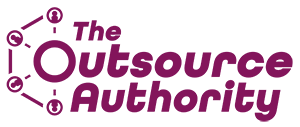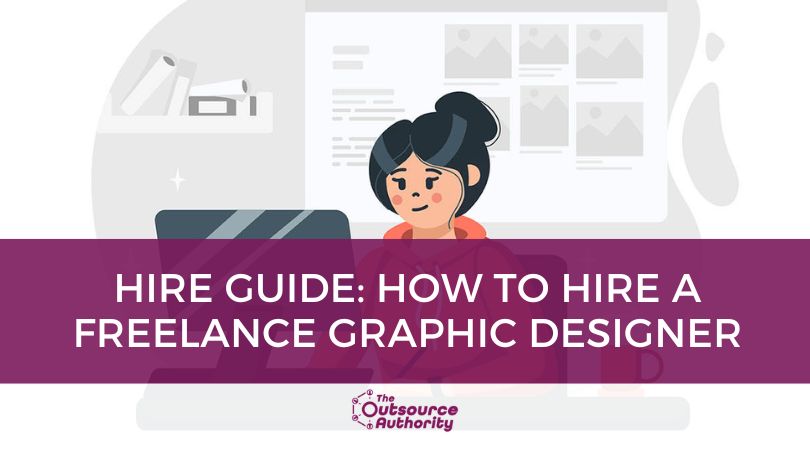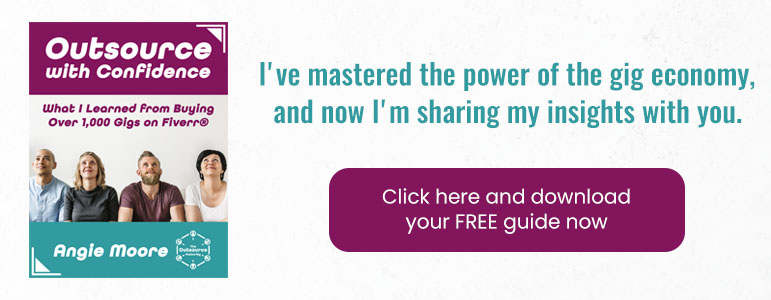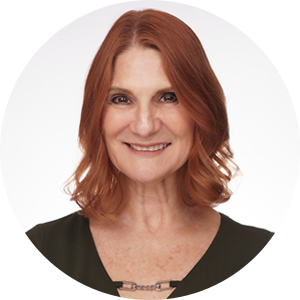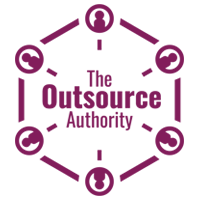Looking to hire a freelance graphic designer for your project? You’ve probably got an exciting idea, but before you start searching, it’s important to figure out exactly what you need. This step helps you explain things better to potential designers and find someone who fits your project.
This guide is here to help you through the process, making sure your collaboration with a freelance graphic designer gets off to a good start. Let’s check out the important steps and things to think about to make finding a designer easier.
Scope of Work
If you’re looking to hire a freelance graphic designer, you likely already have a project or two in mind. Take some time to nail down exactly what you’re looking for. This will help you communicate clearly with the freelancer and weed out any potential candidates that don’t match what you need.
Detailing Project Requirements
For a successful collaboration, it’s important to outline the specifics of each design project:
- Project Description: Provide a detailed overview of the project. Include a couple examples of styles you are looking for, any brand colors and assets, and an outline of what you need.
- Technical Specifications: Specify the technical requirements, such as preferred file formats, dimensions, color schemes, and typography preferences.
- Target Audience and Branding Guidelines: Specify the target audience and any existing branding guidelines to maintain consistency.
- Expectations and Deliverables: Clearly state what you expect as the final deliverables and any specific milestones or checkpoints.
- Mood Boards or Examples: Share mood boards, examples, or references that depict the style, tone, or elements you prefer.
- Previous Work or Competitor Analysis: Offer any previous designs or competitor analyses that can guide the designer in understanding your preferences.
Suppose you’re commissioning a branding project. Your design brief could include a detailed description of your brand ethos, target audience, preferred color palette, examples of brands whose aesthetics resonate with yours, and specific deliverables like a logo, business card design, and social media assets.
Why it Matters:
Documenting requirements not only ensures that the designer understands your expectations clearly but also serves as a reference point throughout the project. It minimizes the chances of misinterpretation and revisions due to unclear instructions.
Key Takeaway:
Invest time in creating a detailed design brief and providing reference materials. This lays the foundation for a more streamlined design process and enhances the chances of the designer delivering work that aligns with your vision.
Estimating Timeframes
Set realistic deadlines and project timelines. This will help narrow down your search to a freelancer with the right availability. Consider the timeframes required for each project:
- Urgency of Deliverables: Identify which projects need immediate attention and which can be spread out over time.
- Realistic Timelines: Work with the designer to establish achievable deadlines that consider both quality and efficiency.
- Communication Frequency: Determine how often you’d like project updates and maintain open communication channels.
Example:
Suppose you’re launching a new product line and need packaging design. You’ll need to specify the dimensions, material specifics, branding elements, and printing guidelines. Clearly outlining these details helps the designer understand and meet your expectations effectively.
Why it Matters:
Breaking down the scope of work helps in avoiding misunderstandings and ensures that both parties are aligned on project expectations. It sets the groundwork for a smoother workflow and minimizes the chances of revisions or misinterpretation.
Key Takeaway:
Be as detailed as possible when defining project requirements and timeframes. This will streamline the design process and help foster a more productive and efficient collaboration with the freelancer.
Budgeting for Design Needs
Your budget will play a huge part in hiring the right freelance graphic designer. Don’t go into this by thinking you’ll hire the first affordable option that you see, but also don’t assume that in order to get great work, you’ll have to pay through the nose.
Assessing Financial Constraints
Consider your business’s financial situation and set aside the amount you’re willing to invest in design projects without compromising other operational or marketing expenses. Be sure to keep in mind additional expenses you will need ongoing work, such as monthly social graphics.
Considering Value Over Cost
Focus on the value you aim to gain from the design work rather than only considering the cost. Quality design can go a long way for your business.
Assess the level of expertise and quality offered by different designers within your budget range. Consider how investing in professional design can positively impact your brand perception, customer engagement, and business growth.
Negotiation and Flexibility
Be open to negotiation and discuss flexible options with the designer. Most freelance sites have set payment structures, but many also offer custom gig options. If you aren’t working through a freelance site, explore payment options such as hourly rates, fixed project fees, or phased payments to suit your budget and the designer’s preferences.
Understand what aspects are negotiable without compromising the overall quality of the design.
Example:
If your business is in its early stages, allocating a considerable budget for design might seem challenging. However, investing in a quality logo and basic branding can establish a strong foundation for future growth, ensuring your brand stands out in the market.
Why it Matters:
Setting a realistic budget ensures that you find a designer whose rates align with your financial capacities while still delivering satisfactory results. It helps in avoiding either overspending or compromising on the quality of design work.
Key Takeaway:
Balance is key when budgeting for design needs. Strive to find a middle ground that allows you to access quality design work while staying within your financial boundaries.
Finding Potential Designers
When you’re looking to hire a freelance graphic designer, it’s important to look at all of your options. Both networking and online sites provide a diverse pool of talent to choose from.
Freelancing Platforms
There are dozens of sites dedicated to helping you hire great graphic designers.
Upwork
When using Upwork, you can create your own job brief and field freelancers who reply. Here’s how to navigate it effectively:
- Profile Review: Explore designer profiles, examining their portfolios, client reviews, and ratings to gauge their expertise and reliability.
- Filters and Categories: Utilize filters based on design specializations, experience level, rates, and geographical preferences to narrow down your search.
- Communication Channels: Use Upwork’s messaging system to discuss project specifics and assess the designer’s responsiveness and clarity in communication.
Fiverr
Fiverr operates on a gig-based model, offering diverse design services at varying price points:
- Gig Reviews and Packages: Evaluate designers’ gig packages, reviews, and ratings to understand what services they offer at what price.
- Direct Communication: Fiverr allows direct communication with designers before placing an order. Use this to discuss project details and ensure mutual understanding.
Specialized Design Sites
There are also many sites that are focused specifically on graphic design:
- Behance: A platform popular among designers for showcasing portfolios. Look for designers whose style aligns with your brand identity.
- Dribbble: Focuses on visual design and allows designers to showcase their work in detail. Find designers with expertise in specific design aspects or niches.
- 99designs: Known for design contests and freelance services. Engage with designers through contests or direct hiring based on their showcased work.
Example:
Suppose you’re seeking a designer for a comprehensive rebranding project. On Fiverr, you can filter for experienced branding specialists, review their past projects, and assess client feedback to find a designer suitable for your project’s scale and requirements.
Why it Matters:
Exploring different online platforms offers a huge spectrum of designers with different specialties, rates, and working styles. This allows you to find a designer whose skill set and approach align closely with your specific design needs.
Key Takeaway:
Utilize the features and search functionalities of online platforms to thoroughly review portfolios, look at reviews, and communicate with potential designers. It helps in making informed decisions and finding the right fit for your design projects.
Networking
You may know a guy who knows a guy, just make sure that guy actually knows what he’s doing.
Leveraging Social Media and Professional Networks
- Social Media Platforms: Utilize platforms like LinkedIn, Twitter, or Instagram to search for freelance designers. Engage with their content and reach out directly to discuss collaborations.
- Professional Networks: Tap into industry-specific forums, groups, or associations where designers might actively participate. Seek recommendations or post inquiries for design needs.
- Referrals: Ask for recommendations from fellow business owners, colleagues, or friends who’ve previously hired freelance designers. Personal referrals often lead to reliable connections.
Example:
Suppose you’re seeking a designer for your startup’s branding. Exploring Upwork could offer a broad range of designers with different specialties and rates, while leveraging LinkedIn might lead you to a designer aligned with your industry expertise through professional connections.
Why it Matters:
Diversifying your search across online platforms and leveraging personal and professional networks widens your pool of potential designers. This increases the likelihood of finding a designer whose style, expertise, and working approach align with your needs.
Key Takeaway:
Don’t limit your search to just one avenue. Combining online platforms with networking allows you to explore a broader spectrum of talent, increasing the chances of finding the perfect freelance designer for your specific requirements.
Evaluating Candidates
I’ve known too many business owners who hired the first graphic designer they thought looked fine. Don’t do that! Take a look at these points before hiring:
Portfolio Assessment
Don’t hire a graphic designer without a portfolio or examples of their work.
Design Diversity and Quality
- Variety of Work: Look for a diverse range of projects within their portfolio. Check if they’ve worked on projects like your requirements.
- Quality of Work: Loo at the visual appeal, attention to detail, and overall aesthetics of their designs. Check for consistency in quality across different projects.
Project Relevance and Creativity
- Relevance to Your Needs: Focus on projects in their portfolio that align closely with your design requirements. Evaluate how they’ve approached similar projects in the past.
- Creativity and Innovation: Assess their ability to bring fresh ideas and creative solutions to design challenges.
Experience and Expertise
Years of Experience and Specialization
- Years in the Field: Consider the designer’s overall experience in graphic design. However, prioritize quality over quantity of experience.
- Specializations: Check if they have a particular niche or expertise that matches your project needs, such as branding, illustration, web design, etc.
Client Feedback and Testimonials
- Reviews and Testimonials: Look for client feedback or testimonials either on the platform or provided by previous clients. Positive reviews can indicate reliability and professionalism.
Style Alignment with Your Brand
Consistency with Your Brand Image
- Brand Alignment: Assess if the designer’s style and aesthetics align with your brand identity. Look for similarities in tone, color schemes, and overall visual language.
- Adaptability: Evaluate their ability to adapt their style to different projects while maintaining creativity and brand coherence.
Sample Project or Test Task
- Request a Small Project: Consider asking shortlisted designers to complete a paid sample project that is similar to what you need. This can provide a clearer insight into their working style and abilities.
Example:
If you’re a tech startup aiming for a minimalist, modern design approach, evaluate the designer’s portfolio for similar styles. Look for clean layouts, use of contemporary fonts, and a focus on user-centric designs.
Why it Matters:
Thoroughly evaluating candidates ensures you choose a designer whose portfolio demonstrates not just technical skills but also an understanding of your brand’s aesthetics and project requirements.
Key Takeaway:
Review portfolios with a critical eye, focusing on relevance, quality, and alignment with your brand identity. It helps in selecting a designer who not only possesses the necessary skills but also resonates with your brand’s visual language.
Questions to Ask When Hiring a Freelance Graphic Designer
As you vet potential candidates for your design project, asking the right questions will make sure they align with your needs and expectations. Here are questions to consider:
Portfolio and Experience
- Can you share examples of projects similar to mine that you’ve worked on?
- What is your design process like, from initial brief to final delivery?
- How do you approach projects to ensure they align with a client’s brand or vision?
- What type of design software and tools are you proficient in using?
Work Approach and Collaboration
- How do you handle feedback and revisions during a project?
- What communication channels and tools do you prefer for project updates and discussions?
- What is your availability for this project, and how do you manage multiple projects simultaneously?
- Can you describe a challenging project you’ve worked on and how you tackled it?
Process and Deliverables
- What are your rates and how do you structure your pricing? (Hourly, per project, etc.)
- Can you provide an estimated timeline for my project based on its scope and requirements?
- What deliverables can I expect at different stages of the project?
- How do you handle intellectual property rights or ownership of the final designs?
References and Client Relationships
- Do you have client references or testimonials I can review?
- How do you ensure transparency and maintain good relationships with your clients?
- Can you provide insights into a project where you faced challenges and how you resolved them?
Adaptability and Innovation
- How do you stay updated with design trends and industry changes?
- Can you adapt your design style to align with different brand aesthetics or project requirements?
- What creative strategies do you employ to ensure originality and innovation in your designs?
Example:
When interviewing a potential freelance graphic designer for a logo redesign, inquire about their previous logo design projects, their approach to understanding brand identity, their availability for your project timeline, and how they handle feedback and revisions.
Why it Matters:
Asking these questions helps you gauge the designer’s expertise, work style, and professionalism. It ensures you find a designer who not only possesses technical skills but also fits well with your project requirements and working preferences.
Key Takeaway:
Customize these questions based on your project’s specifics and preferences. Asking detailed and tailored questions helps in evaluating the designer’s suitability for your unique design needs.
Finding the right freelance graphic designer for your project is about planning and talking things through. By writing down what you need, setting timelines you can actually do, and thinking about your budget, you make it easier to work with a designer.
Remember, it’s not just about how much it costs; it’s about how good the design can make your brand. Looking at different places where designers hang out and checking their work helps you find someone who gets what you’re looking for.
Finding the perfect match for your project is about talking, thinking, and getting creative. With a clear idea of what you need and some good questions, you can hire a freelance graphic designer who makes your idea even better than you imagined.
If you want to make sure you get the perfect candidate for the job, book a one-on-one VIP session with me. I’ve been outsourcing for over a dozen years and I know how to find winners every single time.
